Since its inception, people have seen the internet as a money-making opportunity. And they’re right. The internet has become an integral part of the modern business world, connecting people to the organizations they buy from and vice versa.
But while having a strong website with good hosting is a major part of that puzzle, you can’t just set up shop online and expect customers to flock to your pages. You have to reach out into the crowded cyberspace and pull your prospective customers in with a digital marketing strategy.
But what is a digital marketing strategy? Is a digital marketing strategy the same as a digital marketing campaign? And what can you do to create the best digital marketing strategy possible for your business?
In this article, we’re going to answer all of these questions and more.
What Is a Digital Marketing Strategy?
A digital marketing strategy is a strategy undertaken to achieve specific business goals through online channels. Your digital marketing strategy can include paid and organic strategies, including pay-per-click advertising, search engine optimization (SEO), social media advertising, email marketing, and more.
Many people mistake marketing strategies for marketing campaigns, but these are two very different pieces of the digital marketing puzzle.
How so?
A digital marketing campaign is a part of the digital marketing strategy. It’s the application of part of the strategy. Just like when a construction crew is building a skyscraper, there are often multiple teams working on different sections of the overall blueprint.
The digital marketing strategy is the blueprint, of what you want to achieve on digital channels, and how you plan on doing it. A digital marketing campaign is what your marketing team “builds” to try to achieve those goals, following the plan.
They’re specific actions taken within the digital marketing strategy that move you toward that strategy’s ultimate goal. You could have a social media campaign, an email campaign, and an SEO campaign, all falling under the same strategy.
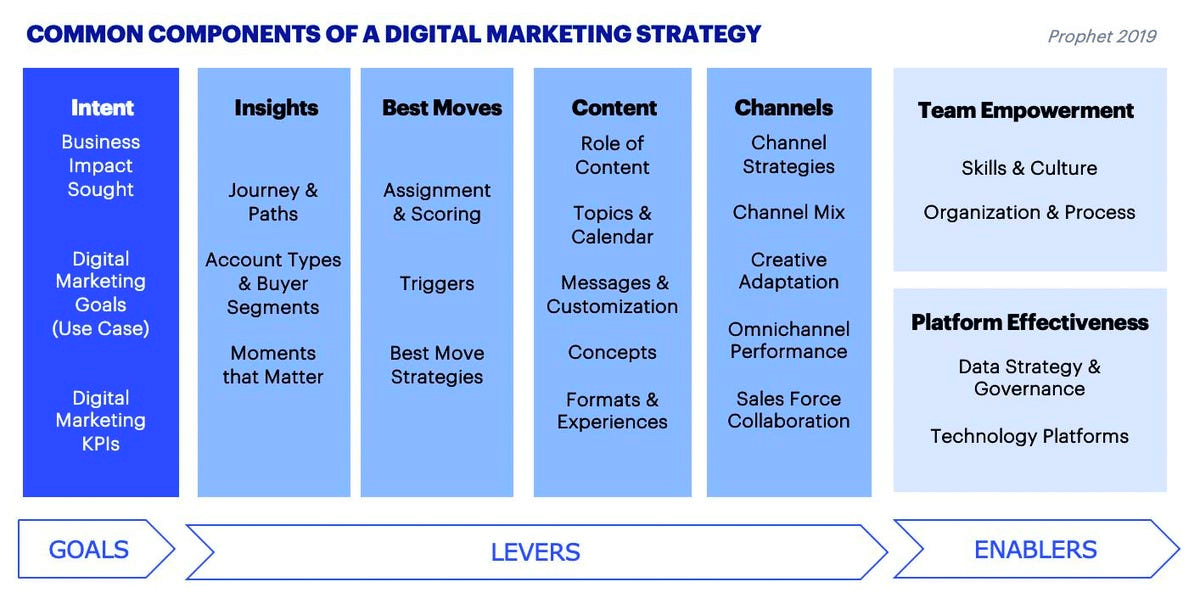
That’s because the strategy itself is broad, covering core objectives and potential campaigns that were highlighted before it launched. There can be multiple campaigns within one digital marketing strategy, which can fall under different umbrellas.
For starters, there’s paid media — content displayed by third parties in exchange for compensation. Some common paid media digital marketing campaigns are pay-per-click ads on Google and social media networks like Facebook and Instagram and influencer marketing.
Then there’s owned media. As the name suggests, this is media wholly owned by the campaign’s business. It’s under your organization’s direct control and can thus be used at no cost other than the labor required to create and populate it.
This could include business websites and blogs but can also be YouTube channels, podcasts, images, and anything else your company owns.
Finally, there’s earned media. This is something created outside the organization that you’re able to leverage for marketing purposes. Earned media can include user-generated content, testimonials, customer reviews, awards you’ve won, news mentions, and other mentions of your brand or company.
These media types can be used in different marketing campaigns, and savvy digital marketers often intertwine them all in a single campaign. Understanding the various forms of media and how they work within your overall digital marketing strategy is important when outlining everything you want to do.
A well-rounded digital marketing strategy typically takes place over multiple channels your audience frequents. This is done for maximum exposure and effectiveness.
Why You Need a Digital Marketing Strategy
A digital marketing strategy is essential for success in the modern business world, whether you’re a B2B or B2C company. We use the digital space for just about everything now, from grocery shopping to booking doctor’s appointments to choosing a SaaS solution for our businesses.
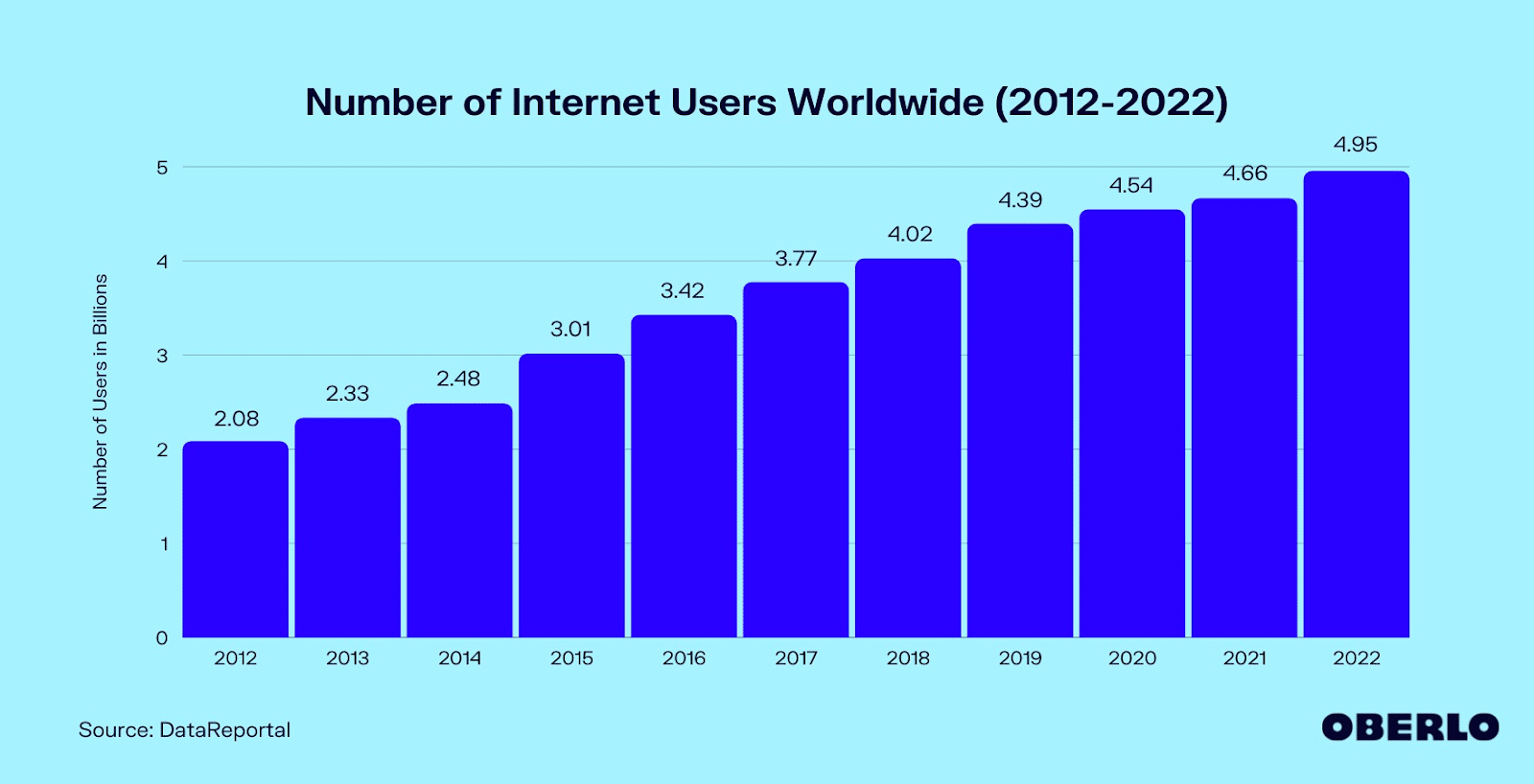
Think about how much time you or the people you know spend online. From thumbing through your phone to watching the latest streaming series on Disney+, a large percentage of our days is spent on the web. Every platform accessed by your prospective customers is a potential marketing opportunity for you.
Email? You can reach them there. Checking Facebook? It can be incredibly effective for digital marketing. Google searches? There are paid and organic options that can get you in front of the eyes that matter most.
You need to be able to compete online. Not only are digital channels effective, but your competitors are already on there, stealing potential customers from you. Plus, most of your prospective customers will expect a decent online presence from your business in this day and age.
And there are many other reasons why you might want to add digital marketing efforts to your to-do list.
For one, it’s a highly cost-effective venture with low or non-existent startup costs. Digital marketing is cheaper than traditional marketing channels. Not only that, but you can reach a targeted global audience far more easily.
Imagine trying to run a global television ad or print advertising spot. Not only are you going to spend a lot more money, but you’re also going to reach a ton of people who aren’t in your target audience.
When marketing through digital channels, you can personalize the ad experience. Many platforms allow you to target specific demographics, showing your content to people based on their age, gender, geographic location, interests, job title, and much more. The days of broad advertising are over. People today want a more personalized experience, and digital marketing is how you give it to them.
Digital marketing results are also very measurable. When running a television commercial or radio ad, you have no idea how many people heard it or what percentage of your new sales are coming from those platforms. However, digital marketing allows for complete transparency with real-time data insights that will show you exactly how many people saw your ad, clicked on it, and converted.
Finally, digital marketing has a huge return on investment potential. Email marketing alone has an average ROI of 4,400%. While billboard advertising has an impressive average ROI of 497%, email marketing efforts can generate nearly ten times that amount.
Digital Marketing Strategy Basics: The Building Blocks
While digital marketing strategies might seem complex on the outside, they’re made up of building blocks that create a strong and sturdy marketing plan.
Let’s go through some of these major building blocks of digital marketing one at a time.
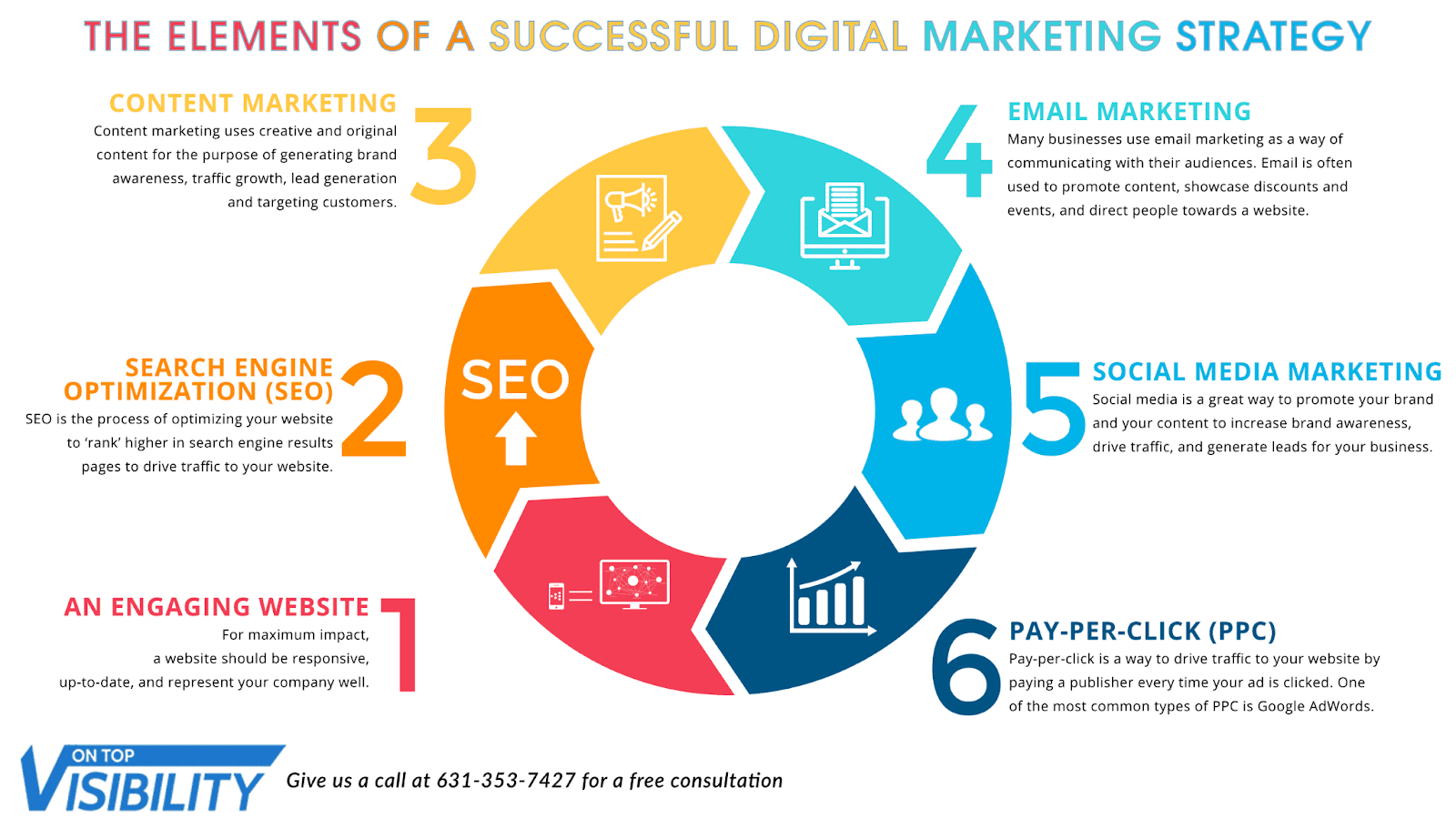
Search Engine Optimization
Search engine optimization, better known as SEO, is an organic digital marketing tactic that will improve your standing on popular search engines like Google or Bing (but, let’s be honest, mostly Google). This is done through a series of content tweaks both on and off your website. You pepper your content with strategic keywords, working it seamlessly into the narrative flow of pages.
On top of that, you optimize off-page content like meta titles, descriptions, and images with the same keywords. This ensures that Google’s crawlers and algorithms will understand who you are and what you do. When recognizing you as an authority in your field, Google will list you higher in the search results for relevant keywords.
You can increase your authority by generating a catalog of high-quality backlinks posted on other websites that point back to yours. Think of it as the website equivalent of a letter of recommendation, where an established website tells Google that it sees you as an authority.
SEO is a complicated process, but thankfully, platforms like WordPress have options that make it a little easier, like tons of high-quality (and mostly free) SEO plugins.
Social Media Marketing
Then you have social media marketing, both paid and organic. Obviously, you should have a social media presence and make regular posts sharing content. After all, 90% of Instagram users follow at least one business or brand.
However, you can reach more people by running paid social media ads on platforms like Facebook, Twitter, and Instagram. Organic reach has dropped tremendously on most major platforms over the past decade, and it’s mostly a “pay-to-play” game today.
Pay-Per-Click Advertising
PPC ads are ads where you only pay when the user who sees your ad takes the desired action. That is typically clicking on a link, hence the name, but it could also be things like signing up for a webinar. On social platforms, you can target these ads to people who meet specific criteria, such as interests, geographic location, age, and more.
You can also run pay-per-click advertising on Google Ads, which allows your ads to appear above the search results for relevant keywords. There are also other types of Google Ads, like display and YouTube ads, and you can customize your campaign to suit your needs. When running Google Ads, you bid on specific keywords or phrases, constructing quality ads that will compete against those of your competitors.
How To Build Your Digital Marketing Strategy
Now that you understand the basics of digital marketing strategies, let’s go over how you can construct your own with the maximum potential for success. We have broken it down into five simple steps.
Step 1: Make Sure Your Digital Foundations Are in Place
Before you can start riding a bike, you first need to make sure that you have tires with air in them. Similarly, before launching a digital marketing strategy with numerous campaigns designed to bring you more business, you must ensure that your digital foundations are in place.
First up, you need to have strong hosting for your website.
Here at Kinsta, we specialize in application hosting, database hosting, and managed WordPress hosting, and believe that it’s a great way to ensure stability and accessibility for your site.
But it’s not enough to just have a website. That website needs to be fast. Speed is an important ranking factor for SEO, and users will navigate away from your site if it takes more than three seconds to load.
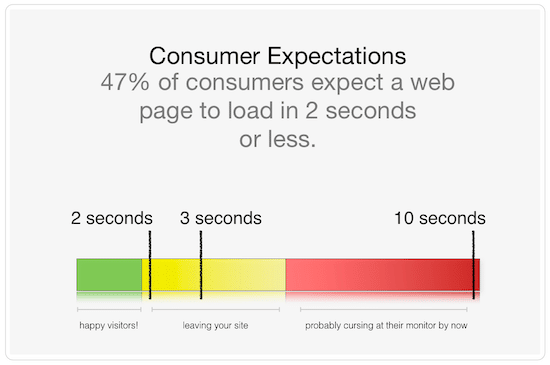
Your site also has to be secure. Security is incredibly important in the age of cybercrime. HTTPS, a robust firewall, and secure hosting service is the first line of defense against cyber attacks. (We offer even more advanced security measures to Kinsta customers.)
On top of that, your site needs to be designed for maximum ease of use. This will help you convert customers more easily and give them a more efficient path to conversion.
Finally, you have to make sure that your social media profiles are set up and updated with the latest accurate information.
Step 2: Define Goals
What do you want to achieve from your digital marketing strategy? What does success look like for you? Some companies are just looking for brand exposure. They just want to get their name out to the masses and make people aware of their existence.
For others, it’s all about sales and conversions. They’re looking to bring in new business and keep them coming back for more. But when you’re outlining goals, it’s good to be specific. How much do you want to see your business grow throughout this strategic period? Are you hoping to increase profits by 40% by the end of the second quarter? If you only reach a 30% increase, would you consider your strategy a marginal success or a complete failure?
This is where you have to develop your best- and worst-case scenarios. Identify the threshold where you’d view the strategy as a failure and measure any success you achieve against that.
This is also when you’d decide which tools will help you achieve success. Are they affordable? How much money are you willing to sink into something like email marketing software to see it succeed?
Remember, for the sake of identifying success or failure, your goals need to be specific and measurable. That means understanding your return on ad spend, cost per acquisition, and more.
Step 3: Understand Buyer Personas
It’s impossible to create a digital marketing strategy without first knowing who you’re marketing to. You need to get to know your key buyers and understand their pain points, motivations, likes, and dislikes. This will help you craft a strategy that appeals to your audience and speaks directly to their needs.
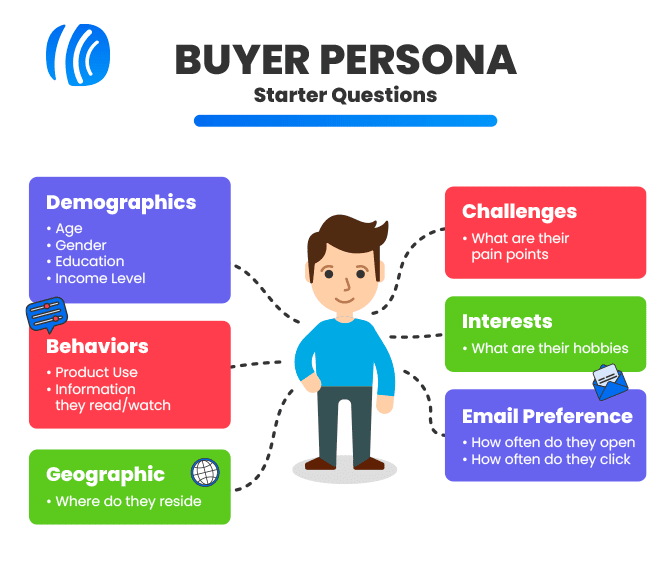
You should have well-formed buyer personas that include demographic information about different subsections of your audience. This can include information like their age, occupation, gender, geographic location, interests, income, and more.
Your marketing strategy can include various campaigns targeted at different buyer personas within your target audience. While buyer persona A might enjoy using social media, buyer persona B might respond better to email marketing, and buyer persona C likes to look up questions on Quora. This is information you need to know if you’re going to maximize your odds of success.
Understand which platforms these personas frequent, and focus your marketing efforts there.
Step 4: Evaluate All Existing Digital Assets
Now it’s time to look at the various content types we identified earlier. You need to know exactly what you have and how it can help you achieve your goals.
You should audit all of your owned, paid, and earned media to maximize your success. Once you have a list of everything, you can determine which marketing campaigns these assets will best assist you with.
This is also an excellent time to identify any gaps in your asset catalog. If there’s something that you think would help put your content strategy over the top that you don’t have yet, it’s time to create or purchase that content.
Don’t just look at how much content you have. Dig into the quality of it as well. If you have blog posts that are older and outdated, refreshing and improving that content might put it back in the game in a way that serves your goals — like reaching the #1 spot on Google for your keyword.
If you have duplicate content on your site, eliminate that right away. Google is not a fan of duplicate content and can penalize you for it.
Step 5: Map Out Your Plan
All the pieces are now in place, which means it’s finally time to map out your content marketing strategy.
You need a content creation plan that fills any gaps you identified in the last step. That ensures you’ll have a well-rounded content arsenal, designed with your audience in mind, that will pay off for you in the long run.
You should have a rough idea of what campaigns you’ll need to run for each buyer persona to help you achieve your goals. Map those campaigns out in their entirety, including what platform you’re using, how long you’re running the campaign, what content you’ll be using, and how much of your marketing budget you’ll sink into it.
Once you’ve done this, create a master document highlighting the entire strategy from beginning to end, featuring a timeline that shows how all of the campaigns you’ve created will contribute to your ultimate goal.
How To Measure the Success of Your Digital Marketing Strategy
One of the most important elements of your digital marketing strategy will be your ability to analyze it. You need to be able to determine the success or failure of your strategy if you’re going to maximize your success odds.
Analytics data is one of the biggest benefits offered by a digital marketing strategy. You can see how many people saw your content, how many clicked on it, and how many converted.

You need to understand where people are coming from and what they’re doing once they arrive on your website. This is how you can identify the best and most effective channels that contribute to your success. It also lets you identify underperforming channels that are dragging your campaign’s overall performance down.
Once you understand what’s profitable and what isn’t, you can eliminate channels that are giving you nothing and feed that freed-up budget into stronger channels.
Remember, your digital marketing strategy is not etched in stone. It’s important to revise and improve the strategy as you go. It’s an evolving process that will change over time.
Top Digital Marketing Strategy Template(s)
If you’re new to developing digital marketing strategies, it can help to work off of a template. These helpful guides can create a skeleton or framework for your strategy, allowing you to fill in your information and view it all in a way that you can understand.
Smart Insights has a great template that runs off of the RACE framework. This stands for Reach, Act, Convert, and Engage.
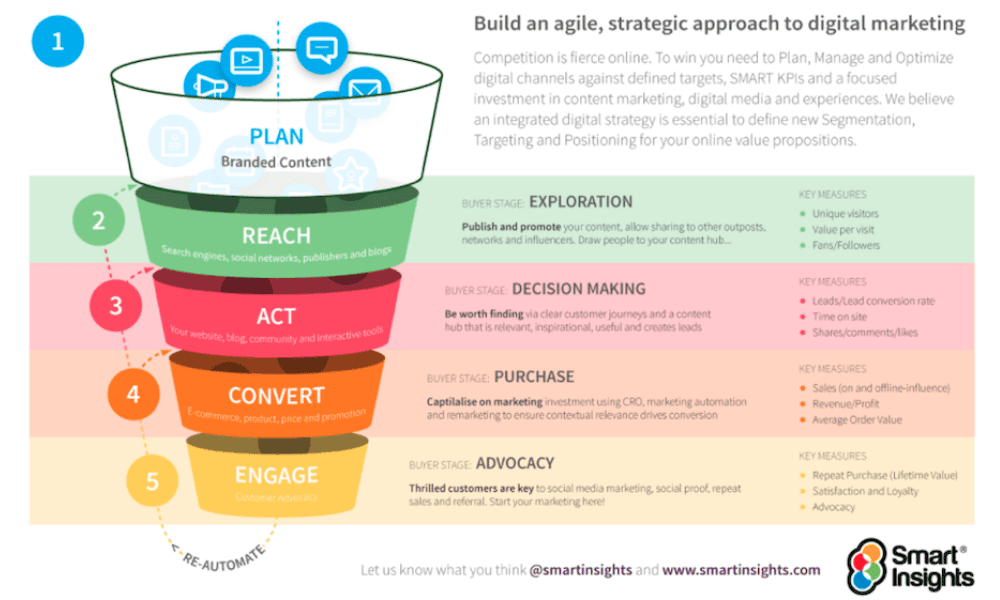
HubSpot also offers a free marketing strategy template, including sections for your business summary, target market, business initiatives, budget, market strategy, marketing technology, and marketing tools.
Finally, there’s Mayple, which will give you access to its free template, which can be personalized to suit your specific needs. Once you download the template, you can enter in all of your information and use it as a guide to inform your marketing strategy.
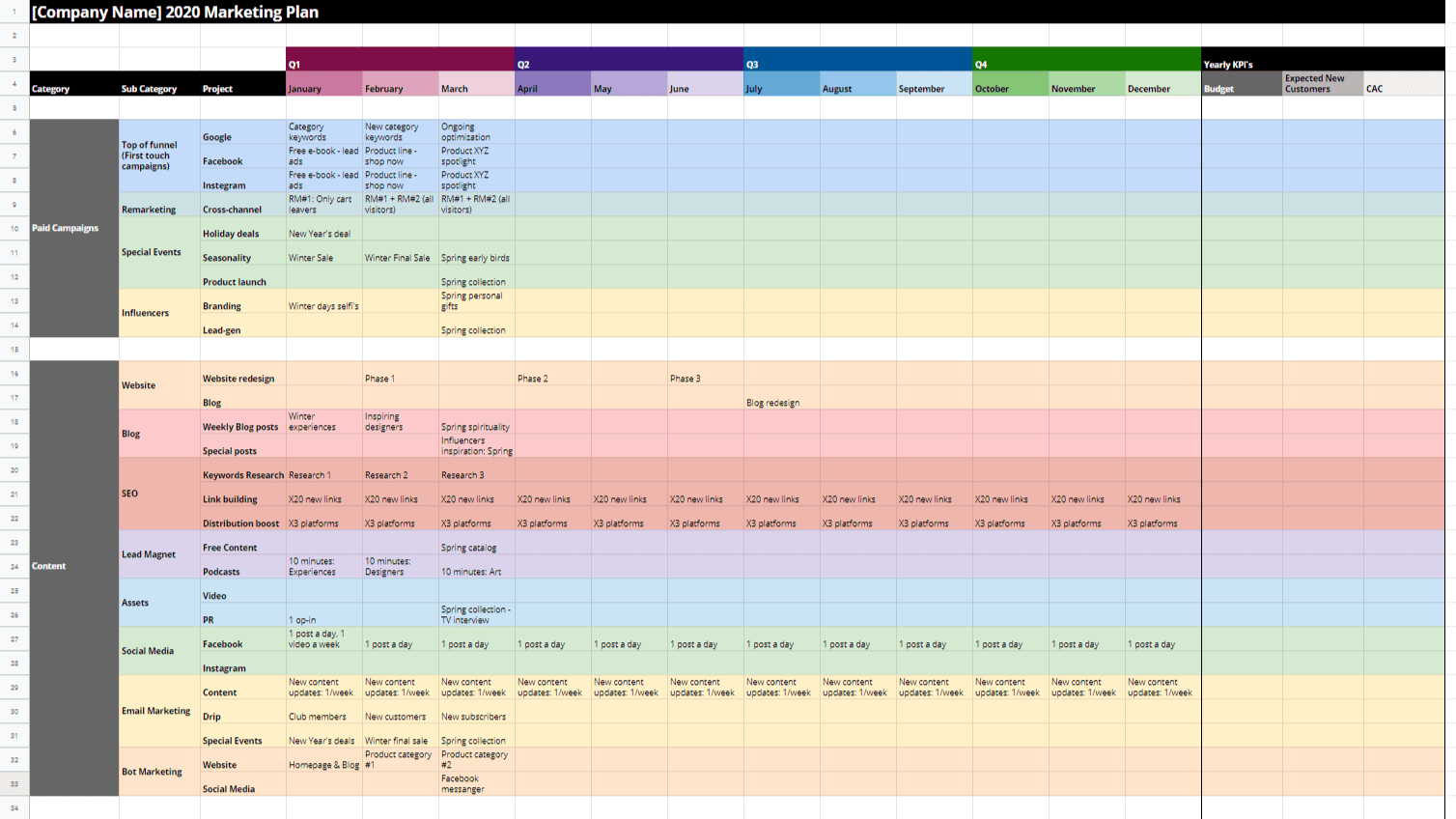
All of the above templates are available for download, but you’ll have to enter some information to receive them, like name, phone number, and email address — which is fairly standard for offers like these.
Plus, these templates are also great examples of a solid digital marketing strategy at work. They’re targeting SMB owners and entrepreneurs who want to get started with digital marketing, but don’t quite know how to. They use the lead magnet of a free digital marketing strategy template to get your contact information, and then once you get started, they can build a relationship with you and sell you their digital marketing-related products or services in the future.
Take note and implement something similar in your own content marketing campaigns.
Summary
Your digital marketing strategy can be the backbone of booming business profits through both outbound marketing and inbound marketing. You can’t afford to ignore the popularity and potential of digital channels in the modern business world. Just about every business has an online presence, and they all compete with one another for the attention of the masses.
Use the information outlined in this article to craft a winning digital marketing strategy, and start attracting laser-targeted potential buyers to your website today. When they get there, you want them to land on a site that’s sturdy, quick, and safe.
If you choose to host with Kinsta, you’ll get lightning-fast, top-of-the-line cloud-based servers managed by experienced sysadmins. In other words, a site that loads fast, is robust, and as secure as you can get. Schedule a demo today and learn more about how Kinsta can help you improve your online presence.


